
SLOPE ASCENDERS
Follow Dorian Densmore and Mya Akins for another winter season of steep Alaskan spines, backyard...
Add 100 EUR more to quality for free Shipping!
€0,00 EUR
You call Colorado home, and you’ve summited all of the state’s 14ers in 31 days by bike and foot in 2016. Did Nolan’s 14 seem like a logical progression?
I think the reason for doing the 14ers initially was to explore my backyard and become more intimate with Colorado—the place I call home. Really, it just reinforced my love for Colorado.
Nolan’s is a very different challenge, here we’re talking two days as opposed to a month long, expedition type mindset—this is a very condensed experience. There’s something about being on that edge, and really, really pushing yourself, for a short(ish) amount of time in a place that you want to get to know more deeply that’s really compelling to me.
I felt that running/biking all of the 14ers is more of the process, whereas Nolan’s is the tip of the spear—and a lot more momentarily intense.
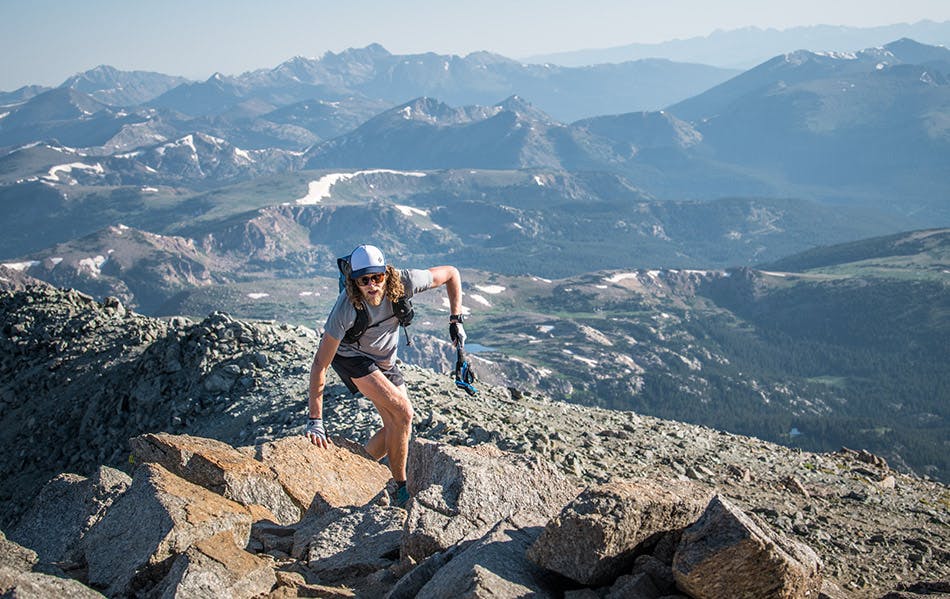
On June 29th, BD Athlete Joe Grant reached the Mt. Shavano trailhead and looked at his watch. Forty-nine hours and 38 minutes had passed since he’d set off from the Mt. Massive trailhead in Leadville, Colorado. Now, looming behind him were 14 of the Sawatch range’s 14,000-foot mountains, stretching for roughly 100 miles. He’d climbed over 44,000 vertical feet to cross those peaks, and in doing so had set the unsupported FKT (fastest known time) for completing the notoriously difficult Nolan’s 14.
Joe’s trip had its moments. For example, there are approximately two hours during the first night that he still can’t seem to remember. When he finally came to, he was lying on a steep slope at 13,000 feet, slowly sliding down. His shoes, which he didn’t remember taking off, were sitting about 15 feet above him.
But those moments were precisely what Joe was looking for.


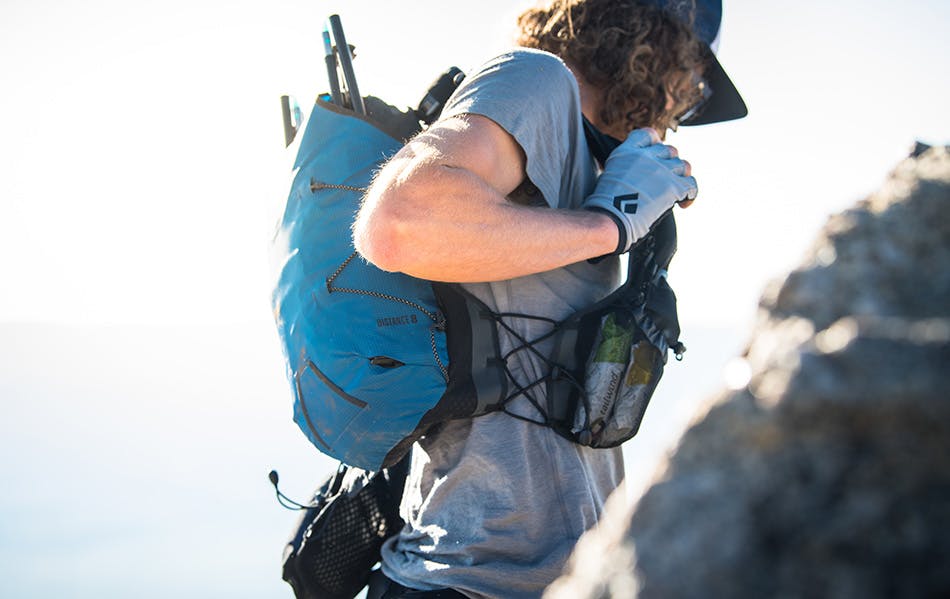
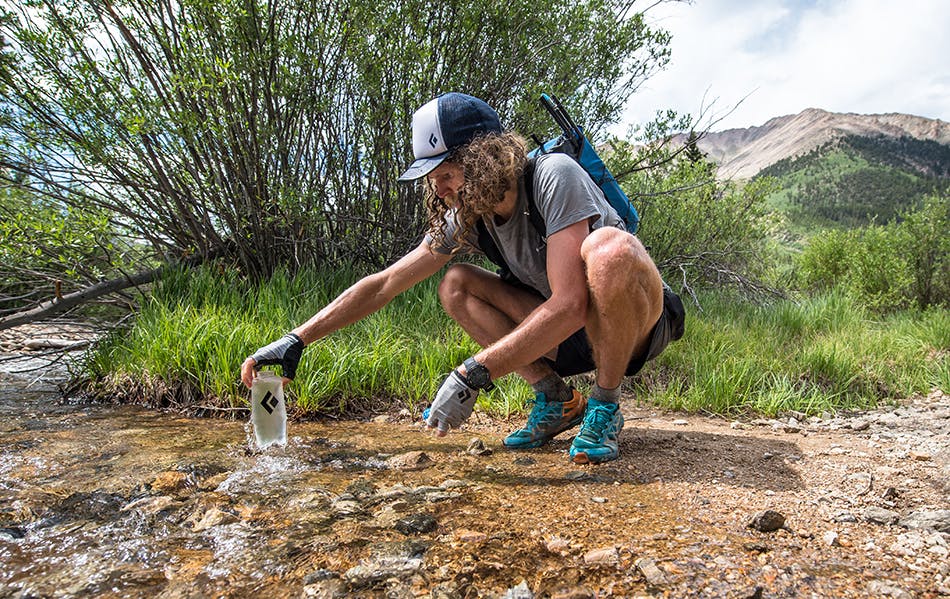
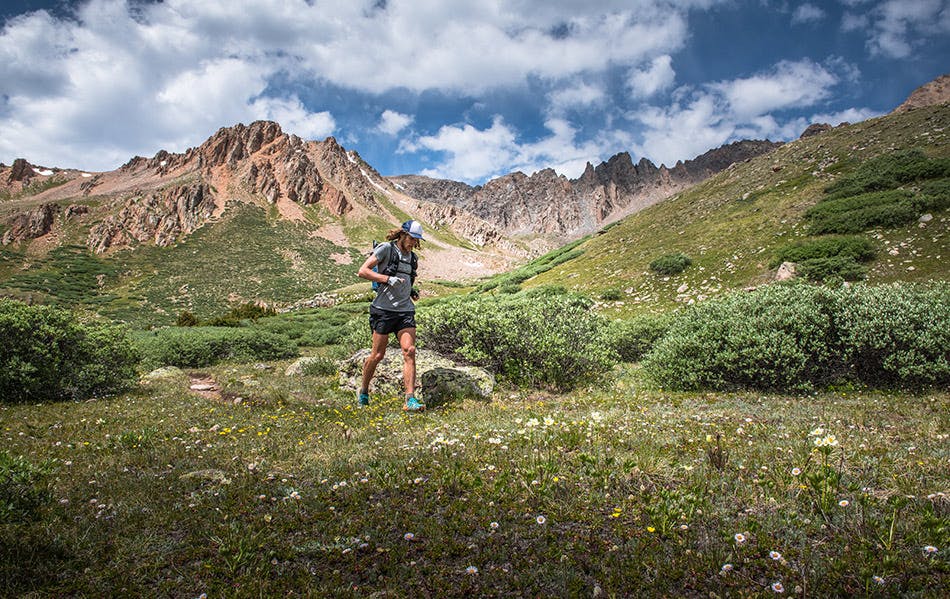
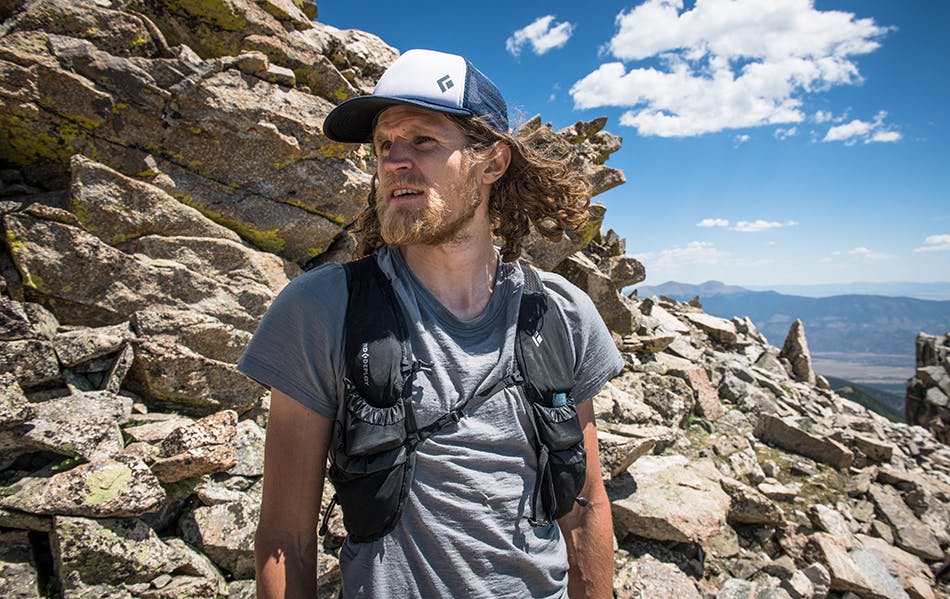
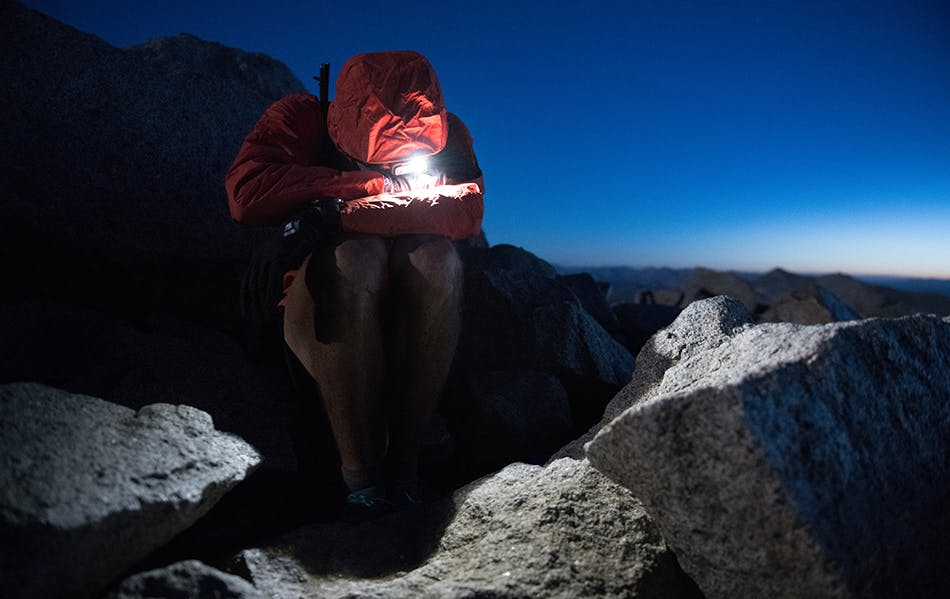
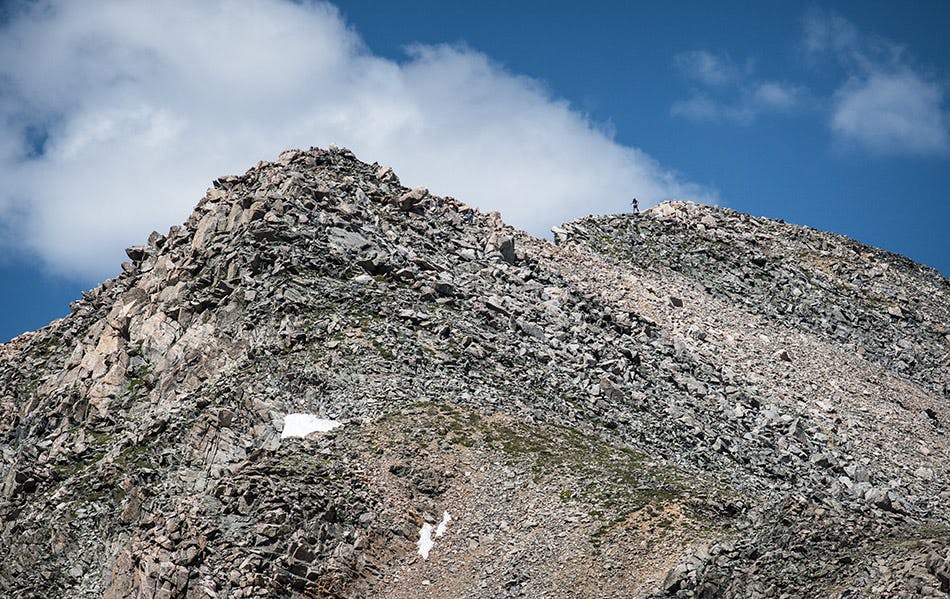


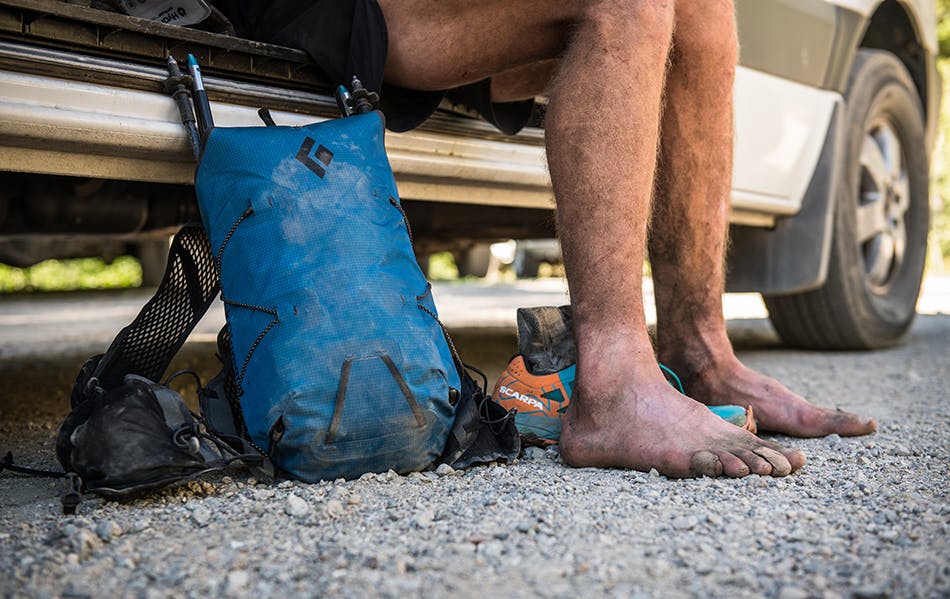

“I find it interesting to get into that place where I’m on the edge and I have to elevate myself and I don’t have anything to rely on other than myself,” says Joe. “I think there’s just a real sense of curiosity, for me, when I know I’m going to get into a difficult situation. Growth ultimately does come with a certain amount of struggle.”
We caught up with Joe two days after his soul-searching run to learn more about his motivation, training, and experiences on Nolan’s 14.
Let’s start at the beginning. When did you first have the idea to try Nolan’s 14?
The idea for me started around 2012. I moved to Colorado that spring, and Tony [Anton Krupicka] was considering doing it in 2013. So, we spent a bunch of time in 2012 in the Sawatch range, just scoping those mountains. I supported him on his attempt that year and then I guess it was always in the back of my mind.
But I think with this kind of undertaking, you do have to set a date, and then put it on the calendar and focus on making that a reality. It’s definitely something you have to commit to and decide, “I’m doing it.”
For me, that really came about last winter when I didn’t get into Hardrock 100, so I thought, I’ll do Nolan’s instead.

From the start, did you always want to run the route unsupported? Can you describe why you chose this style?
Really, if your motive is purely to go fast, then supported would be the way to go. But the aesthetic of setting off with everything you need on your back and just going out into the mountains speaks to me more.
It’s a little romanticized maybe. But you just set off in the mountains with your little pack, and you don’t really need anything. There’s creeks with water in them, you have some food, a jacket if it gets cold, a headlamp for the night and away you go. There’s a real sense of freedom around that.
The narrative shifts a little bit to self-exploration, self-sufficiency, and exploring that aspect of who you are rather than trying to go as fast as possible.
Can you describe your gear set-up for an unsupported effort of this magnitude?
I used the 8-liter BD Distance Pack [available in spring 19], and in that, I had a pair of five-ounce puffy pants, a three-ounce puffy vest, a BD Fineline Rain jacket, a BD merino beanie, full fingered BD Mont Blanc Gloves, and an iPhone. I wore the BD Rhythm Tee [available in spring 19], which is a NuYarn merino t-shirt, and I had the BD Distance Wind Shell [available in spring 19] that I kept in my back pocket, which was my go-to when it was a little bit cold.

As an emergency kit, I brought a knife, two strips of tape for blisters, or if I rolled an ankle or something I could tape it up, and a lighter and space blanket.
I brought two headlamps: I brought one Spot headlamp, and one SpotLite [available in spring 19], and I packed two sets of spare batteries for the Spot—they both run AAA batteries, so I could use them in the SpotLite as well. I felt these were bright enough lights for how small they are, and the Spot actually lasted for both nights without changing batteries.
I brought the BD Distance Carbon Z trekking poles as well. Unfortunately, I snapped one on Mt. Columbia. I fell through a little snowfield—nothing dramatic—but I punched through down to my thigh and the pole went through and just snapped under the snow on the talus. That was kind of a bummer because I had Mt. Yale, Princeton and Antero to go and those are just big mountains. And because of the ethic of carrying everything on your back, you basically just carry your broken pole with you.

And then just food and water?
Yeah, for food I brought roughly 7,000 calories. Half of which was Tailwind—a powdered drink—and then I brought 10 bars. I think it was like four Bobo bars, six Macro bars, and then I brought a little Ziploc bag of trail mix, and I had three recovery drinks—powdered Tailwind protein drinks—to treat myself along the course. In retrospect, I should have brought more of that—I think those worked really well. I really responded well when I took those and had good little stretches afterward. I think if I’d done less of the sports drink and a little more of the protein, it would have worked better, just because you’re just not moving that fast. Having something a little more satiating could have worked better.
Total weight, you reckon?
I think it was probably around seven or eight pounds at the start. My little postal scale was maxing out, and it wouldn’t actually read how much my pack weighed. With water and everything—I had two 0.5L BD soft flasks up front, and then I had a third flask with a Katadyn filter, just a screw on top. That way I could drink out of any creek. Most of the water up high is good and I wouldn’t filter it, but there are some creeks with a lot of elk and deer activity.
I actually ended up using that third flask a lot, because it was just so hot. I’d have that filled with water in the pack and then have my two flasks with Tailwind up front.

I did go the weekend before to the Sawatch just to scope some areas that I needed to refamiliarize myself with—like between the peaks. When you’re in the valley below tree line, it’s a little more bushwacky. I wanted to have a very strong visual in my head of the whole route.
So, part of it is just having that familiarity and doing what I like to do, which is going up and down the mountains around home.
Then pushing through the night and stuff like that, I’m really basing that on experience.
I did do a race in Japan this May, a 50 miler with 17,000 feet of vert, and that was a really good hard run that lent itself well to the preparation. I had intense jetlag and sleep deprivation on that trip, so I chalk that up to some good mental training for this.
Really all of that prepared me for going out in the mountains to jam for a couple days.

Can you describe some of those moments?
There were a couple of moments where I checked out mentally, pretty intensely, to where I wasn’t really sure what I was doing. When I came back to, I had a few doubts in my ability to do it because you’re digging a little too deep. Like what if I just pass out? And that’s the thing about being by yourself. You need to have that governor; you can’t redline too much because you still have to self-preserve, be safe, and make it.
The first night everything was going well. Missouri was the fifth peak, and then I was going up Mt. Belford, which in the whole context of the route, is a pretty trivial traverse over. It’s pretty easy. But when I got there around 10:30 or 11:00 p.m. I was pretty foggy. Then I started to go over to Oxford which is just a little bop over, which is also not much gain—maybe 700 feet. By then I was completely out of it. Like really, really unsure of what I needed. So coming off of Oxford, you come down this tundra/talusy slope, down to a creek.
But at about 13,000 feet, just about after midnight, I can’t really remember what happened for a couple of hours.
I woke up with my shoes off, and they were like 15 feet above me, and I was on this very steep slope at 13,000 feet in a ball gradually inching my way down. I came to and was like, “oh, my shoes are up there.” I had my puff pants on and my rain jacket on, which I don’t remember putting on, and I went to retrieve my shoes. I meandered around for a couple of hours after that, generally going the right direction, but I came to this meadow with tall willows and started getting really confused. Eventually I kind of came back to and snapped back into it. But that two-hour window wasn’t great [laughs].

But that’s what I mean. Being by yourself, the whole game is being in touch with your decision making.
It was a good mental check, like “oh, you can’t do that again and lose touch with what you’re doing.”
And then on the last peak, I got really turned around and confused, and ran the ridge back on the last peak in the wrong direction. I realized I was doing it when I reached the saddle between the last two peaks and that I had to re-do the last peak to get back on track [laughs].
So, it was actually Nolan’s 15 for you?
Yeah [laughs].
Of all the peaks linked together, what was your favorite and why?
It’s kind of hard to pick out a favorite, because it’s more moments. Overall all I really enjoyed the whole route, even the tedious stuff.
And there’s definitely highlights, like the sunset on Missouri during the first night was pretty incredible. Same goes for the sunrise on Columbia with the full moon. There’s just a vastness to the route that you can really feel on that peak because you’re midway.

Also, Shavano is the first 14er that my wife Deanne did, and here it’s the last peak that I did, so it was just special to get there and remember that day when she did it. And coming down I was thinking, that’s a pretty big, hard 14er for your first one. It’s a big hike [laughs].
There were a lot of moments like that, that I totally loved. Like seeing goats on the top of Antero.
Nolan’s 14 is completely unsanctioned—meaning there are no medals, no big awards—yet to complete a run of this magnitude, you needed to push yourself to the brink. Why would you basically risk so much for this run? What was your underlying motivation?
For me, there really has to be intrinsic motivation when wanting to do something like this. Nolan’s is a context. It’s a place to go and challenge yourself. There are “times” to go after. But the thing that’s interesting about the “time” is that you wouldn’t get as intense and full-on of an experience if I was doing it in say, five or six days. I’m not comparing these experiences in a negative way, but if you’re doing it more casually, you have one kind of experience and if you do it hard, you have another kind of experience.
I find it interesting to get into that place where, I’m on the edge and I have to elevate myself and I don’t have anything to rely on other than myself. I have to think, OK, how do I now deal with this situation.
I think there’s just a real sense of curiosity, for me, when I know I’m going to get into a difficult situation. Growth ultimately does come with a certain amount of struggle. So, putting yourself into difficult situations—it’s not that I want to harm myself, or die or anything like that—it’s more that I want to figure out a way to overcome. And knowing just how big and challenging Nolan’s actually is, I figured that would happen on the route—that I would get to points along the way that I would be mentally challenged.

If you think about it beforehand, in theory, you can say to yourself, “oh, if I get cold, or if I start to bonk, this is how I’m going to respond to it.” But, until you’re in that situation and it’s actually happening to you, it’s just a concept. When you’re actually in that moment, it’s pretty freaking hard, and that’s where I think it’s a really interesting mind game.
I don’t really get that in daily life, at least not to the edge like that.
In the end, you set the unsupported FKT (fastest known time) for Nolan’s 14. How important was the time for you?
The first thing to note is that Andrew Hamilton held the previous record. And what he did is called the Holy Nolan’s, since he started at Mount of the Holy Cross, which is 30 miles north of Mount Massive [the first peak when running north to south on Nolan’s 14]. That’s the entire Sawatch range, actually 15 peaks. So, he did a warmup, and it took him 72 hours to do the whole thing, and his record time of 53 hours and 42 minutes, was achieved as part of this Holy Nolan’s [laughs].
So, when you’re the person going after that and you’re challenging someone’s time, you’re not setting a standard, you’re just following someone’s footsteps.
But … to do that, it’s going to force me to be the best version of myself. It will force me to elevate my game as much as I can and really dig to those depths of myself and have those experiences.

After you finished, what did you do?
I had a Subway sandwich [laughs], went and hopped in the Arkansas River—which was divine—tore a blister off my foot and then went to have some Bolognese, and then … drove home [laughs].
But that’s what’s cool to me. It’s just really simple. I didn’t have anything more to do other than go and run. So, when I got done, it was like, sweet, that’s that. Now let’s go home.

Follow Dorian Densmore and Mya Akins for another winter season of steep Alaskan spines, backyard...
Follow Dorian Densmore and Mya Akins for another winter season of steep Alaskan spines, backyard couloirs, and deep adventures in the mountains.


Watch BD Athlete Alex Honnold throw down on some hard trad high above Tahoe.



In 2012, filmmaker and photographer Ben Ditto, and professional climber Mason Earle equipped an immaculate...
In 2012, filmmaker and photographer Ben Ditto, and professional climber Mason Earle equipped an immaculate line in Tuolumne’s high country. But their attempts to free the route were thwarted when Mason’s life changed drastically. With the help of Connor Herson, Ditto and Mason found a way to keep the dream alive.
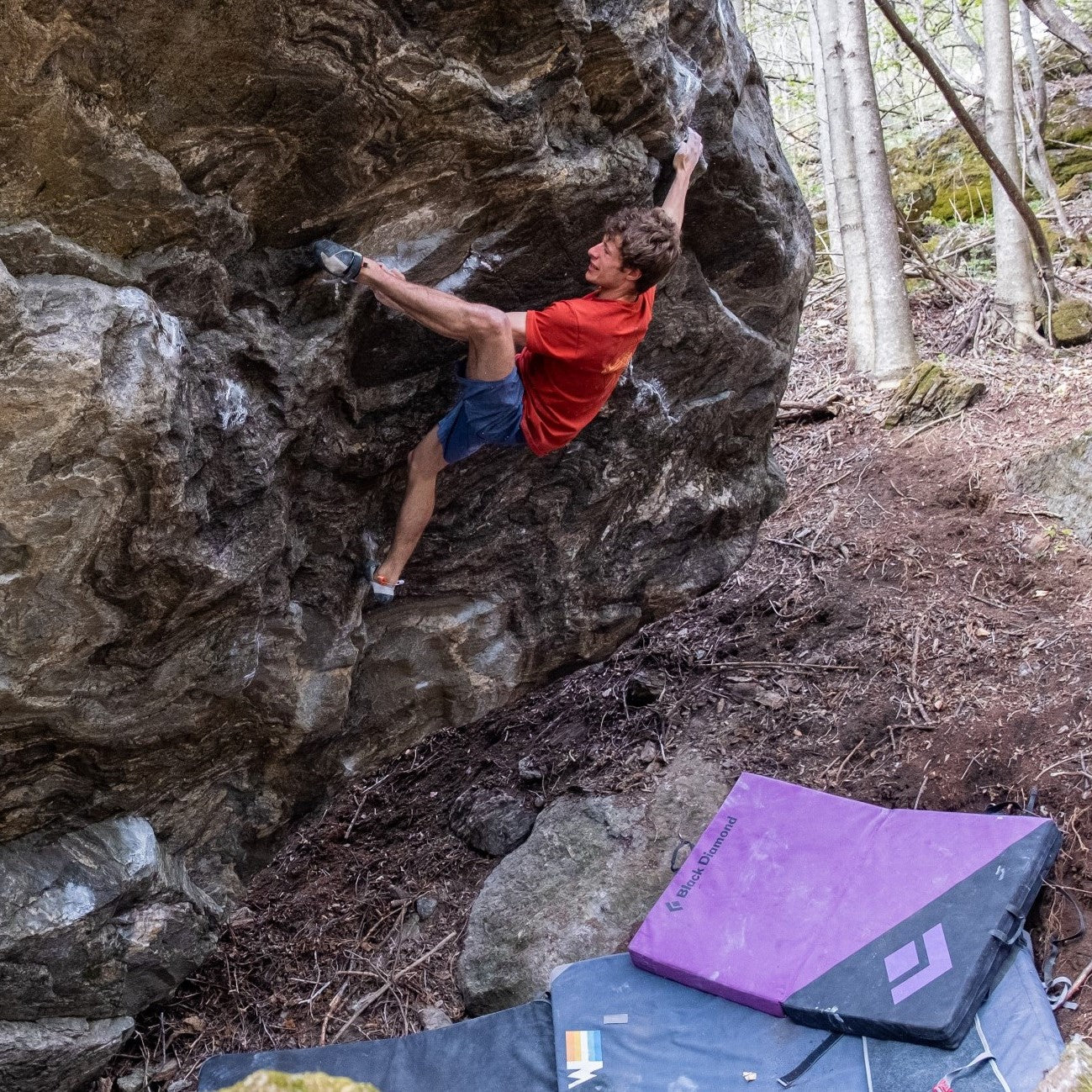


Watch and learn as our Field Test Coordinator runs you through a step by step...
Watch and learn as our Field Test Coordinator runs you through a step by step process of trimming and setting up any STS-style Black Diamond skin.

Every climber has a few lines they dream about. Whether inspired or haunted—or sometimes both—these...
Every climber has a few lines they dream about. Whether inspired or haunted—or sometimes both—these lines can push us beyond what we thought we were capable of, in turn teaching us who we really are. BD Ambassador Ethan Salvo recently restructured his entire life to focus on two climbs that pulled him into the void with only one way out … getting to the top. This is his story of sending Dreamcatcher and becoming the first Canadian to climb V16 in the same week.

BD Athlete Connor Herson spent as many weekends as possible in the Valley this spring...
BD Athlete Connor Herson spent as many weekends as possible in the Valley this spring during a grueling quarter at Stanford. The objective? Ground up, in-a-day ascents.


BD Athlete Joe Grant’s Epic 400-Mile Vision Quest in the San Juan Mountains.

Follow Hillary in this documentary film capturing her record-breaking ascent of Europe’s tallest peak.

BD Athlete Seb Bouin takes us back to his home crag of Pic Saint-Loup where...
BD Athlete Seb Bouin takes us back to his home crag of Pic Saint-Loup where he establishes the true king line of the cliff—Wolf Kingdom.
